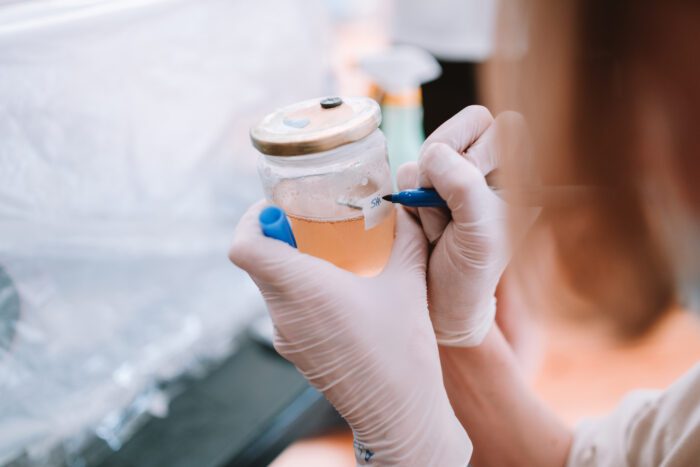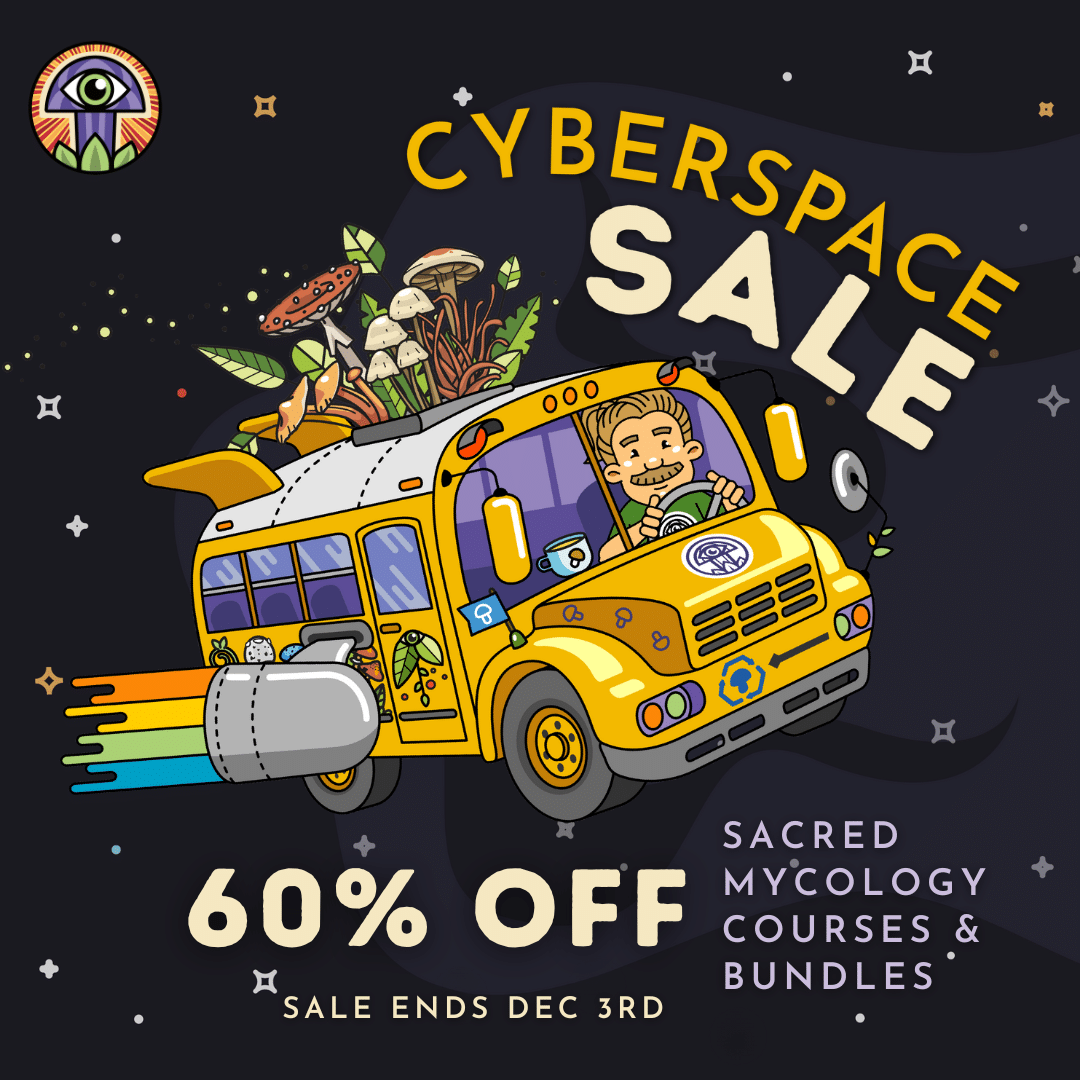When it comes to home scale mushroom cultivation, we at the Fungi Academy believe in the power of mushroom liquid cultures!
Why?
They’re easy and cheap to make, extremely scalable, colonize grains far quicker than agar cultures and can be used to make endless more liquid cultures or to inoculate grains in non-sterile environments. Compared to other growing techniques, that’s unprecedented for small-scale growers.
These reasons are why we’ll soon begin to offer liquid cultures on our website, courtesy of the Mushroom Liquid Culture King, Paul of Fungaia.
In this spirit, we thought we’d provide a primer on the basics of mushroom liquid culture.
what is a mushroom liquid culture?
A mushroom liquid culture is just living mycelium inside lightly nutritious water. A basic, common recipe for this nutritious water mixture is 500 millimeters of filtered, non-chlorinated water combined with 10 grams of honey, light malt extract, or some other simple, easily fermentable sugar.
What’s the difference between a mushroom liquid culture and a spore syringe?
As we just learned, a mushroom liquid culture is basically just mycelium growing in liquid.
Spores and spore syringes, on the other hand, are not mycelium. Spores must first germinate before they can begin to form mycelium. So, when you inoculate a substrate with spores/spore syringe, it must first germinate before it begins to grow mycelium. Conversely, when you inoculate a substrate with a mushroom liquid culture, it starts growing (more) mycelium almost immediately.
What are some of the benefits of working with mushroom liquid cultures?
We think the greatest benefit of mushroom liquid cultures is that once you have a clean mushroom liquid culture to work with, you can inoculate grains in a non-sterile environment like your kitchen counter.
This means there’s no need for a Still Air Box or a flow hood, substantially lowering

the barrier to entry in small-scale home mushroom cultivation. Since the risk of contamination is so low, this also means less failure, which is what often discourages beginners from continuing on their mushroom cultivation journey.
Some other benefits of mushroom liquid cultures are the fast colonization rates—the more liquid culture you use, the faster the colonization—the ease of making and expanding mushroom liquid cultures, and how cheap they are to produce. Even in today’s wacky world, water and honey are pretty easy to find for a couple bucks.
What are some of the challenges of working with mushroom liquid cultures?
We’d be remiss if we didn’t mention a couple drawbacks of mushroom liquid cultures. For one, when you first make a liquid culture, it is prone to contamination. That’s why we recommend beginner growers purchase a mushroom liquid culture syringe from experienced mycologists like Paul.
Then there’s the fact that it can be difficult to identify contamination in mushroom liquid cultures. That’s why reputable vendors test their cultures before sale. But for the beginner, this requires a sterile space and some basic lab equipment and skills. Again, buying a small syringe of liquid culture from a professional and then expanding it yourself sidesteps this challenge.
Another challenge is that to keep your liquid culture vigorous and healthy, you need to agitate and oxygenate the culture, which requires a stir plate. You could twirl your culture by hand everyday but this is definitely not ideal. Luckily, stir plates are pretty cheap (~$25) and with a little research and time, you can easily build your own using a computer fan and some magnets.

Try our Mushroom Cultivation Course for FREE
By now, you probably get the point: mushroom liquid cultures are invaluable for mushroom growers of all skills and scales. And if you can master the technique like Paul, you may have a profitable business on your hands.
Wondering how to make your own liquid culture?
about the author
Sam is a writer, award-winning journalist and professional mycologist from the United States who arrived at the Fungi Academy one midsummer’s day in 2019 and left six weeks later with lifelong friends and a passion for mushroom cultivation.
In the past year three years, he’s built a laboratory and fruiting room in his home, cultivated and foraged over 20 species of gourmet and medicinal mushrooms, started a medicinal mushroom tincture business and returned to the Fungi Academy to teach his techniques to students.


